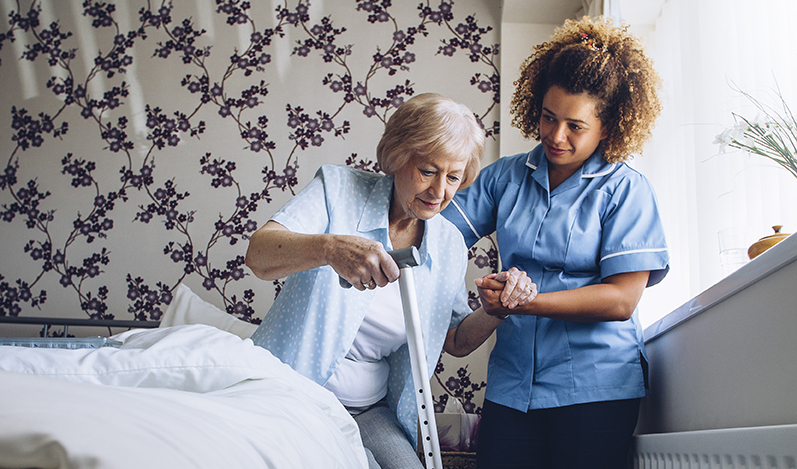Caring for a loved one with Alzheimer’s disease at home presents unique challenges, particularly when it comes to ensuring their safety. In New York, where homes vary greatly from urban apartments to suburban houses, it’s essential to adapt the living space to meet the specific needs of Alzheimer’s patients. Here’s a guide to creating a safe and supportive home environment for individuals with Alzheimer’s in New York.
Understand the Risks
Alzheimer’s disease affects memory, thinking, and behavior, leading to increased risks of accidents and injuries. Common hazards include:
- Falls: Due to impaired balance and coordination.
- Wandering: Patients may leave home and become lost.
- Medication Mistakes: Forgetting doses or taking too much.
- Fire Hazards: Forgetting to turn off the stove or other appliances.
- Confusion and Agitation: Leading to dangerous behaviors or accidents.
General Safety Tips
1. Clear Clutter and Improve Organization
- Remove tripping hazards such as loose rugs, electrical cords, and clutter.
- Keep walkways clear and ensure that furniture arrangements allow for easy movement.
2. Install Proper Lighting
- Ensure that all areas of the home are well-lit, especially staircases, hallways, and bathrooms.
- Use nightlights to help patients navigate in the dark.
3. Secure Medications and Hazardous Materials
- Store medications, cleaning supplies, and other hazardous materials in locked cabinets.
- Use a pill organizer or automated medication dispenser to manage doses.
Specific Home Modifications
1. Bathroom Safety
- Install grab bars near the toilet and in the shower or tub.
- Use non-slip mats in the shower and on bathroom floors.
- Consider a shower chair or bench and a handheld showerhead for easier bathing.
2. Kitchen Safety
- Use appliances with automatic shut-off features to prevent fires.
- Lock away sharp objects, matches, and lighters.
- Label cabinets and drawers to make it easier for the patient to find items.
3. Bedroom Safety
- Place a mattress on the floor or use bed rails to prevent falls from the bed.
- Install motion sensor lights that turn on when the patient gets out of bed.
4. Living Room Safety
- Anchor heavy furniture and bookshelves to the wall to prevent tipping.
- Avoid glass furniture and sharp-edged tables.
- Use cordless window coverings to avoid strangulation risks.
5. Door and Window Safety
- Install locks or alarms on doors and windows to prevent wandering.
- Use childproof covers on doorknobs or install a deadbolt out of the patient’s reach.
Specialized Safety Measures
1. Identification and Tracking
- Ensure the patient wears an ID bracelet with their name, address, and emergency contact information.
- Consider a GPS tracking device if wandering is a significant concern.
2. Communication Tools
- Keep important phone numbers and emergency contacts easily accessible.
- Use picture-based communication boards if verbal communication becomes challenging.
3. Calm and Consistent Environment
- Maintain a routine to provide structure and reduce confusion.
- Use familiar objects and decorations to create a comforting environment.
Leveraging New York Resources
1. Local Support Services
- Connect with local Alzheimer’s support groups and resources in New York. Organizations such as the Alzheimer’s Association offer valuable information and assistance.
- Utilize respite care services to give primary caregivers a break.
2. Professional Assistance
- Consider hiring professional in-home caregivers trained in Alzheimer’s care to provide additional support and ensure safety.
- Consult with occupational therapists for personalized home modification recommendations.
3. Community Programs
- Engage the patient in local community programs designed for individuals with Alzheimer’s. Many New York communities offer specialized activities that provide socialization and mental stimulation in a safe environment.
Creating a safe home environment for Alzheimer’s patients in New York requires thoughtful planning and continuous adaptation. By understanding the risks, making necessary modifications, and leveraging local resources, you can create a supportive and secure living space that enhances the quality of life for your loved one.







